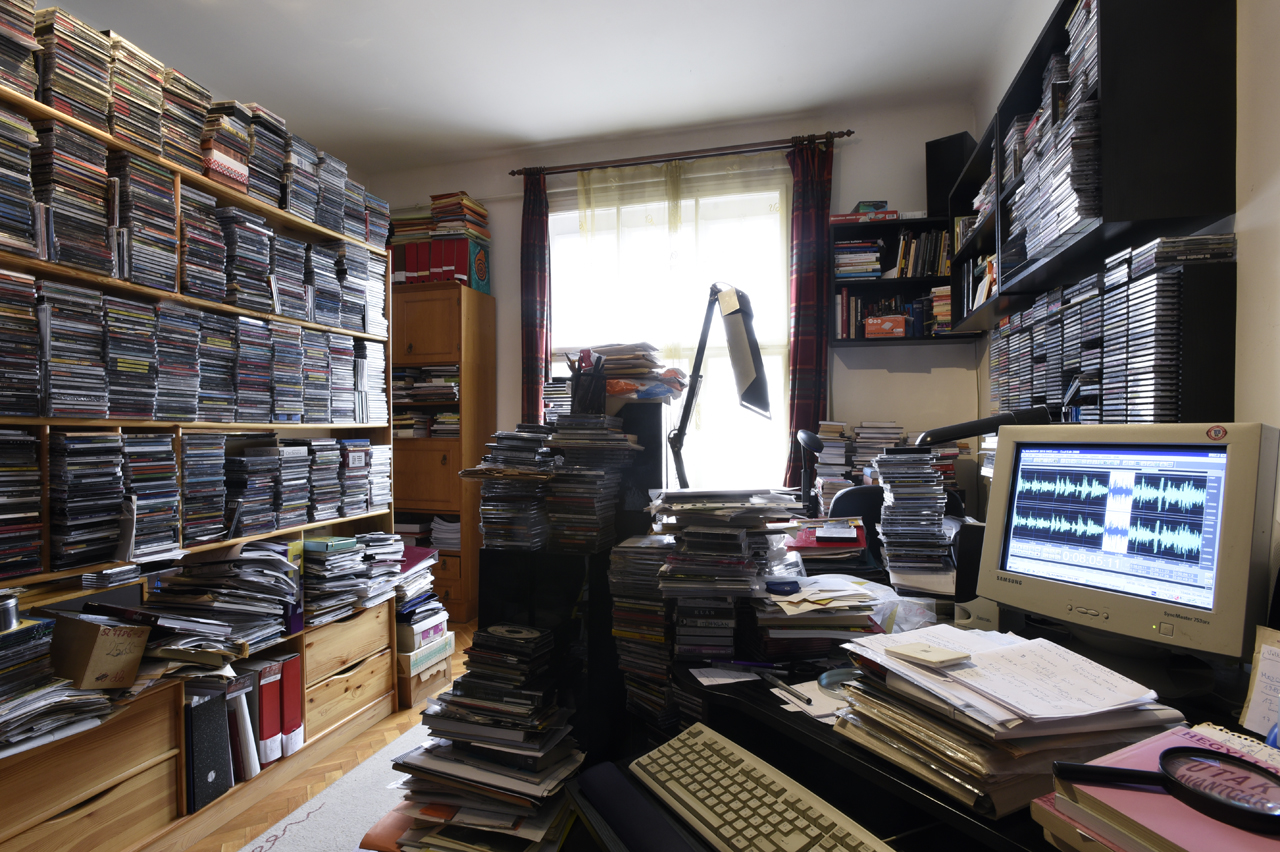The archival collection was neither created by a deliberate decision by the owner, nor was it made accidentally. Its creation, rather, was linked to the overall system of the Hungarian shortage economy of the 1960s and the limited import of records of rock and beat music, which by then were also familiar to some extent in Hungary due to the popular music stations of foreign radios and also to private acquisitions of materials which were not available through the official import channels of state commerce. Furthermore, the prevailing cultural policy, which was based on the so-called “3 Ts,” (the initials of the Hungarian terms used to refer to the three official categories of cultural activity, “supported,” “tolerated,” and “banned”), also made this the state of affairs for a long time.
The first items in the collections are from the mid-1960s, when Attila Koszits managed to acquire singles and LPs and tape-recorded copies of music played by popular foreign and domestic bands. As the availability of relevant publications in Hungary was rather limited and pop music literature of a decent quality was sorely lacking, Koszits began to collect information systematically for a database he created on his own.
By this time, drawing on his education in music, Koszits himself played in a beat band. The music was influenced mostly by the hit songs of his own disc and tape collection. In 1968, he was asked to make regular disc show programs as a DJ. At that time, as part of dance events, the transfer of knowledge of beat and rock music between songs and compositions was a common practice by DJs. They would offer information in a witty and fun form. The base of the collection, therefore, was created as a result of three factors which fortuitously coincided. These factors were Koszits’s love of music and his vocation as a musician (he continued to be an active musician until 1973 in different beat, rock, and jazz bands), his image of himself as a kind of public educator, and, of course, his passion for collecting records, at first as an amateur.
These factors gave a distinct color and to the underground or alternative culture and made it a force in the creation of a sense of community, as Koszits became an increasingly active participant in the music world of both Pécs and Budapest. As a punk and new wave DJ, he regularly performed, for instance, in the Club of Józsefváros and the Cultural Centers of MOM and Almásy Square in Budapest. He contributed as an organizer, a presenter, and a music expert to artistic events held in Pécs. In the meantime, he also took active part in music life as a documentarist and journalist who wrote on music events, as well as an expert in media communication (a radio reporter and editor of music programs). His array of interests and the many ways in which he engaged in the music world in Hungary at the time made him more than an average music enthusiast or amateur musician.
Attila Koszits, has, in fact, undertaken several cultural roles by participating in a wide array of activities. He has been a participant in music events who, with his intellectual engagement, has also shaped this sphere of cultural life actively. Furthermore, he has also been a collector and documentarist who has authored both objective and engaged reports on music events. Lastly, he also played a pioneering role in music education and the public transfer of knowledge. Thus, his private collection has been available for others too, and even if it is not open to the public, experts were always welcome to use it for their research and publications. For instance, educator József Havasréti, an expert on underground culture from Pécs University, repeatedly referred to items in the collection and publications from the exhibition “Pécs Underground, 1980,” which are parts of Koszits’s collection. Thus, the collection is not a dead one, but rather it remains a relevant group of materials even today, which is used by the owner / collector and other experts for research, education, and publication.

